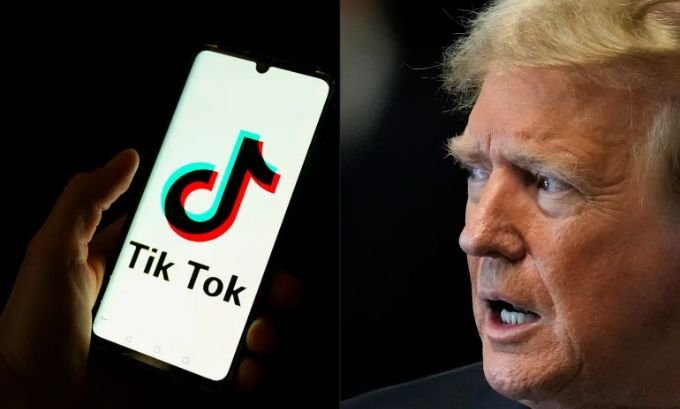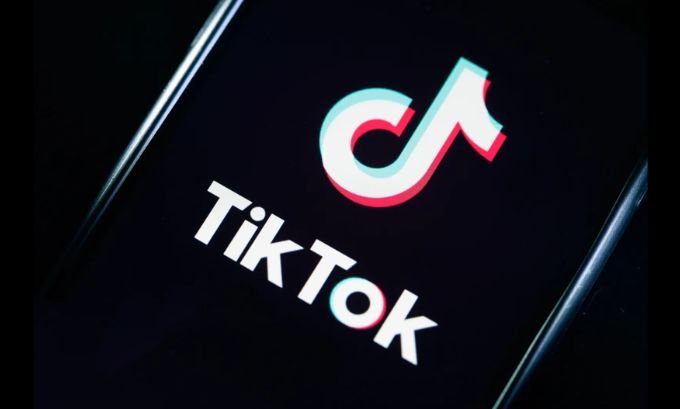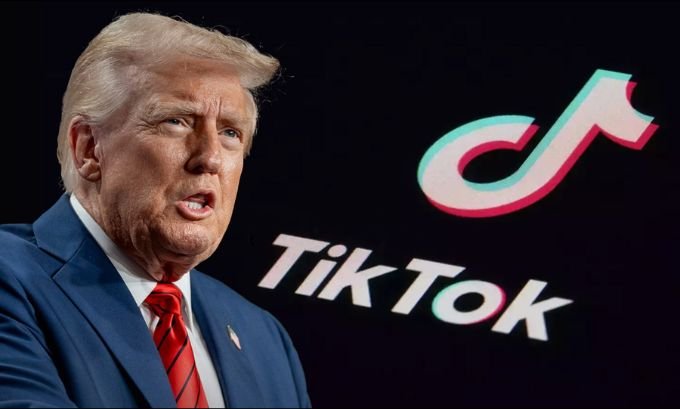The proposed Trump TikTok deal aims to resolve a major standoff between the United States and the popular social media app, TikTok. At its core, the deal is a direct response to U.S. National Security concerns, intending to transfer control of the app’s U.S. operations from its Chinese parent company, ByteDance, to American investors. This complex agreement involves major players like Oracle and Silver Lake, and has far-reaching implications for data privacy, international relations with China, and the future of social media.
This article breaks down every angle of the Trump TikTok deal. We will explore the motivations behind it, the key figures and companies involved, and what it means for the 170 million American users who scroll through the app every day.
Table of Contents
The Core of the Trump TikTok Deal: A National Security Imperative
The main driver behind the Trump TikTok deal is the concern over U.S. National Security. For years, officials voiced fears that ByteDance, being a Chinese company, could be compelled by the government in China to hand over sensitive data on American users. Another major fear was that the platform could be used to spread disinformation or propaganda, subtly influencing public opinion on a massive scale.
These concerns prompted the U.S. Congress to act, passing legislation that gave ByteDance a clear ultimatum: sell TikTok’s U.S. operations to an approved American entity or face a nationwide ban. This set the stage for a series of intense negotiations led by the administration of Donald Trump, who positioned himself as a key dealmaker in finding a solution that would keep the app running while addressing the security risks.
The central idea was to create a new, U.S.-controlled company to manage TikTok’s American operations. This new entity would be majority-owned by American investors, including the private equity firm Silver Lake, and its board would include members with deep expertise in cybersecurity. This structure was designed to create a firewall between American user data and ByteDance, and by extension, the Chinese government.
Key Players and Their Roles
Understanding the Trump TikTok deal requires knowing who is involved and what their stake is.
Donald Trump and the White House
As president, Donald Trump was the public face of the push to restructure TikTok’s ownership. His administration framed the issue as a critical matter of U.S. National Security. He personally announced the framework of the deal and emphasized the need for American control, even mentioning conversations with Chinese President Xi Jinping to facilitate the agreement. His involvement transformed a complex corporate negotiation into a high-profile geopolitical event.
Oracle: The Trusted Tech Partner
Oracle, a giant in cloud computing and database management, was chosen as the “trusted technology partner” in the deal. Its role is twofold:
- Data Hosting: All U.S. user data would be moved from its current servers to Oracle‘s secure cloud infrastructure located within the United States. This is meant to prevent data from being accessed from China.
- Algorithm Security: Oracle would be responsible for inspecting, securing, and potentially rebuilding the famous TikTok Algorithm. This is a crucial and technically complex task, as the algorithm is the secret sauce behind the app’s addictive nature.
ByteDance and China
As the parent company, ByteDance stood to lose control over its most successful international product. While publicly agreeing to negotiations, the company and the government of China were careful not to give up their most valuable asset: the TikTok Algorithm. The Chinese government even updated its export control laws, making it clear that the algorithm could not be sold without its permission. This created a major sticking point in the negotiations.
Silver Lake and U.S. Investors
Private equity firm Silver Lake emerged as a key American investor in the new TikTok entity. Along with other U.S. investors, they would hold a majority stake in the newly formed “TikTok Global.” Their involvement was crucial to meeting the requirement of American ownership, ensuring the company’s governance would align with U.S. interests.

A Personal Look: My Experience Analyzing the TikTok Ecosystem
As a tech analyst, I’ve spent countless hours dissecting social media platforms. When the news about the Trump TikTok deal first broke, my initial reaction was one of skepticism. The idea of “stripping out spyware” or simply moving data to a new server sounds simple, but the reality is far more complex.
I remember running a network analysis on TikTok a few years ago, just to see where its data packets were going. While I found no “smoking gun” of data being sent directly to Beijing, the app’s architecture was incredibly intricate. Its data collection practices were aggressive, much like other social media apps, but its connection to ByteDance added a layer of geopolitical risk that you don’t see with platforms like Instagram or YouTube.
The debate over the TikTok Algorithm is particularly fascinating. It’s not just a piece of code; it’s a dynamic system that learns from user behavior in real-time. The proposal for Oracle to “retrain” the algorithm on U.S. data is a monumental task. It’s like trying to replicate the secret recipe for Coca-Cola by only tasting the American version. The algorithm’s success comes from its global data pool. Separating the U.S. portion could fundamentally change the user experience, potentially making the app less engaging. This technical challenge is at the heart of whether the deal can truly succeed in practice.
What I Like: Strengths of the Proposed Deal
Even with its complexities, the Trump TikTok deal has several potential strengths aimed at safeguarding American interests.
- Enhanced Data Security: Moving all U.S. user data to Oracle‘s domestic cloud servers is a significant step. It creates a clear physical and digital barrier, making unauthorized access by foreign entities much more difficult.
- American Oversight: Creating a new U.S.-based company, TikTok Global, with a majority of American investors and a security-focused board, establishes a clear line of accountability. This board would be responsible for protecting user data and ensuring the platform operates in line with U.S. laws.
- Preserving the User Experience: The deal was designed to be seamless for users. It avoids an outright ban, which would have cut off 170 million Americans from a platform they use for entertainment, commerce, and communication.
- Algorithm Inspection: Giving Oracle the authority to continually inspect and monitor the TikTok Algorithm provides a layer of transparency that was previously missing. This allows for ongoing security checks to ensure no backdoors or malicious code exist.
Areas for Improvement: Weaknesses and Lingering Questions
Despite its strengths, the deal leaves several critical questions unanswered and has notable weaknesses.
- The Algorithm Conundrum: The biggest issue remains the TikTok Algorithm. The deal proposes that ByteDance would license the algorithm, not sell it. This means ByteDance and, by extension, China, could still retain some level of influence or access. An operational relationship, even a contractual one, might not fully satisfy the national security concerns raised by the U.S. Congress.
- Enforcement and Verification: How can U.S. authorities be 100% certain that no data is being siphoned off? Verifying that every line of code is clean and that no hidden data channels exist is an incredibly difficult, if not impossible, task. It requires continuous, deep-level monitoring.
- Geopolitical Tensions: The deal is heavily dependent on cooperation from China. Both Donald Trump and Xi Jinping would need to align on the terms. Any escalation in trade tensions or other political disagreements could easily derail the agreement, plunging TikTok‘s future back into uncertainty.
- The “Illusion” of Separation: Critics argue that as long as ByteDance retains any ownership stake and a licensing agreement for the algorithm, true separation is an illusion. The potential for influence, whether direct or indirect, remains a valid concern.

Comparing the Scenarios: Deal vs. No Deal
To better understand the stakes, let’s compare what happens if the Trump TikTok deal goes through versus a scenario where it fails, leading to a ban.
| Feature | Trump TikTok Deal (Proposed) | No Deal (Potential Ban) |
|---|---|---|
| User Access | Seamless, app remains available | App removed from U.S. app stores |
| Data Location | Stored in the U.S. on Oracle servers | N/A (app inaccessible) |
| Ownership | Majority U.S. investors (Silver Lake, etc.) | Remains fully owned by ByteDance |
| Algorithm Control | Licensed from ByteDance, monitored by Oracle | Fully controlled by ByteDance |
| National Security | Risks are managed through oversight and data localization | Perceived risks eliminated by removing the app |
| Economic Impact | Businesses on TikTok continue operating | Significant disruption for creators and small businesses |
| Geopolitical Impact | A complex compromise between the U.S. and China | A direct economic and political confrontation |
This table illustrates that the Trump TikTok deal is fundamentally a compromise. It attempts to mitigate the most pressing U.S. National Security risks without resorting to the drastic measure of a full ban, which would have its own negative economic and social consequences.
Frequently Asked Questions (FAQ)
Here are answers to some common questions about the Trump TikTok deal.
1. What is the Trump TikTok deal in simple terms?
The Trump TikTok deal is a proposed plan to restructure the ownership of TikTok’s U.S. operations. It would move the app from being owned by its Chinese parent company, ByteDance, to a new company called TikTok Global, which would be majority-owned by American investors like Silver Lake and have Oracle as its technology security partner.
2. Why is the U.S. government concerned about TikTok?
The primary concerns are related to U.S. National Security. Officials fear that the Chinese government could force ByteDance to hand over data on American citizens or use the TikTok Algorithm to spread propaganda and influence public opinion in the United States.
3. Will I have to download a new app if the deal goes through?
No. The deal is designed to be seamless for users. You would be able to continue using the TikTok app as you always have, without needing to download a new version or migrate your data.
4. What is Oracle’s role in the deal?
Oracle would act as the “trusted technology partner.” Its main responsibilities would be to host all U.S. user data on its secure servers in America and to continuously monitor and secure the TikTok Algorithm to ensure it is free from foreign interference.
5. Does China approve of this deal?
The approval from China is complicated. While the government has allowed commercial negotiations, it has also implemented export control laws that restrict the sale of key technologies, including the TikTok Algorithm. The deal’s finalization would likely require some form of approval or non-objection from Beijing, which Donald Trump indicated he discussed with Xi Jinping.
6. Who would own the new TikTok?
The new entity, TikTok Global, would be majority-owned by U.S. investors, including private equity firm Silver Lake and Oracle. ByteDance would retain a minority stake, but control would rest with the American-led board of directors.
7. What happens to the TikTok Algorithm?
This is the most contentious part of the deal. ByteDance would not sell the algorithm outright. Instead, it would license it to the new TikTok Global. Oracle would then be responsible for inspecting, securing, and operating a version of the algorithm for U.S. users, outside of ByteDance‘s direct control.
Conclusion: A High-Stakes Compromise for the Digital Age
The Trump TikTok deal represents a landmark attempt to navigate the complex intersection of technology, commerce, and geopolitics. It is a pragmatic compromise designed to address legitimate U.S. National Security concerns without taking the drastic step of banning a platform beloved by millions. By bringing in trusted American partners like Oracle and Silver Lake, the plan creates a framework for secure, domestic control over U.S. user data and the powerful TikTok Algorithm.
However, the deal is not a silver bullet. Lingering questions about the algorithm’s licensing and the practical challenges of ensuring total security mean that vigilance will be required. The success of this arrangement hinges on the continued cooperation of all parties, including ByteDance and the government of China, and the robust execution of security protocols by Oracle.
Ultimately, the Trump TikTok deal serves as a blueprint for how democratic nations might handle technology platforms originating from authoritarian states. It balances the principles of a free and open internet with the undeniable need to protect national security in an increasingly digital world. As this story continues to unfold, it will set a precedent for years to come.
About the Author:
Alex Carter is a veteran technology analyst with over 15 years of experience specializing in cybersecurity, social media platforms, and geopolitical tech policy. Alex has consulted for both private and public sector organizations, providing expert analysis on digital infrastructure and data privacy risks. His work focuses on making complex technical and political issues accessible to a broad audience.

